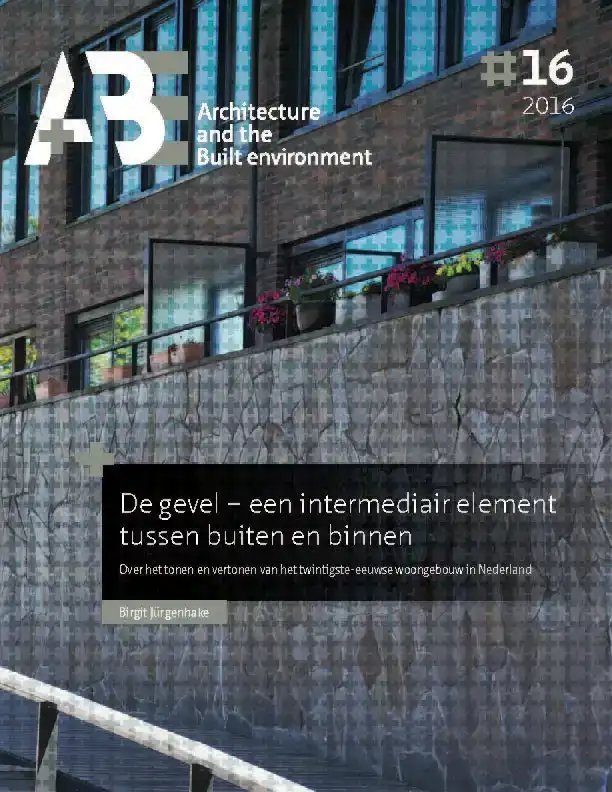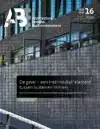- Boeken
- Informatief
- Beta
- technische wetensch.
- bouwkunde
- DE GEVEL - EEN INTERMEDIAIR ELEMENT TUSSEN BUITEN EN BINNEN
JURGENHAKE, BIRGIT
DE GEVEL - EEN INTERMEDIAIR ELEMENT TUSSEN BUITEN EN BINNEN
49,95incl BTW
Dit boek wordt geprint en duurt gemiddeld 5 werkdagen
Vertrouwd sinds 1927
Persoonlijke aandacht en advies
Vanaf 17,50 gratis verzenden NL & BE
Meer dan 150.000 artikelen online
Omschrijving DE GEVEL - EEN INTERMEDIAIR ELEMENT TUSSEN BUITEN EN BINNEN
This study is based on the fact that all people have a basic need for protection from other people (and animals) as well as from the elements (the exterior climate). People need a space in which they can withdraw from the rest of the world. The two s
tates, inside and outside, public and private, contact with, or isolation from, the outside world, are relevant in fulfilling this basic need. People also want their home to have a certain appearance or status which they can identify with and which t
hey can present to the outside world. This can also often be derived from the facade. The facade which is on a side which can be seen by the general public can be seen by the most people. Protection and appearance/status are two important characteris
tics of the facade. The term social filtering is used in this study to mean protection and face or mask to mean appearance/status. The means which can be used for protection embrace a broad spectrum, of which a fence, the doorstep (threshold), the do
or and shutters are just some initial examples. The means which can be used to lend status to a house are just as diverse. It is impossible to make a strict distinction between the means of social filtering and those of the face or mask and they ofte
n fulfil both functions. The facade as social filter and as face or mask of the residential building is the starting point of this study. Both the roles, as social filter and face of the home, have undergone great change as a consequence of the accom
modation of several homes in the one building. The history of homes in the Netherlands shows that the individual house has only been one of many dwelling possibilities since the nineteenth century ; the ''stacking'' of homes on top of each other in l
arger buildings, described as residential building, became a necessity in the cities. This is why this study is focussed on the residential building and its facade in the city in the Netherlands.
tates, inside and outside, public and private, contact with, or isolation from, the outside world, are relevant in fulfilling this basic need. People also want their home to have a certain appearance or status which they can identify with and which t
hey can present to the outside world. This can also often be derived from the facade. The facade which is on a side which can be seen by the general public can be seen by the most people. Protection and appearance/status are two important characteris
tics of the facade. The term social filtering is used in this study to mean protection and face or mask to mean appearance/status. The means which can be used for protection embrace a broad spectrum, of which a fence, the doorstep (threshold), the do
or and shutters are just some initial examples. The means which can be used to lend status to a house are just as diverse. It is impossible to make a strict distinction between the means of social filtering and those of the face or mask and they ofte
n fulfil both functions. The facade as social filter and as face or mask of the residential building is the starting point of this study. Both the roles, as social filter and face of the home, have undergone great change as a consequence of the accom
modation of several homes in the one building. The history of homes in the Netherlands shows that the individual house has only been one of many dwelling possibilities since the nineteenth century ; the ''stacking'' of homes on top of each other in l
arger buildings, described as residential building, became a necessity in the cities. This is why this study is focussed on the residential building and its facade in the city in the Netherlands.
Reviews
0.0/5.0
Gemiddelde uit 0 reviews
Meest behulpzame reviews
Nog geen reviews geschreven


